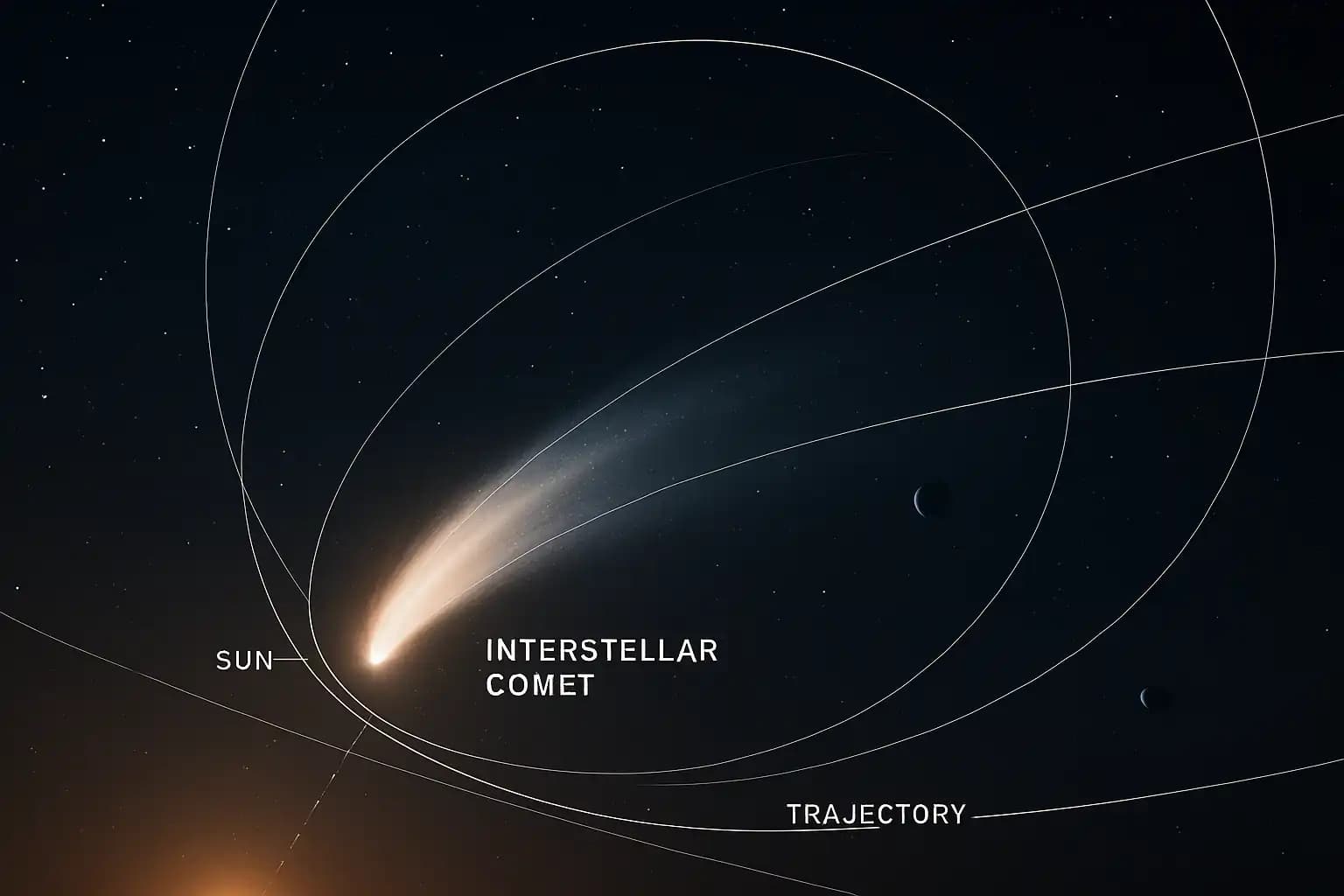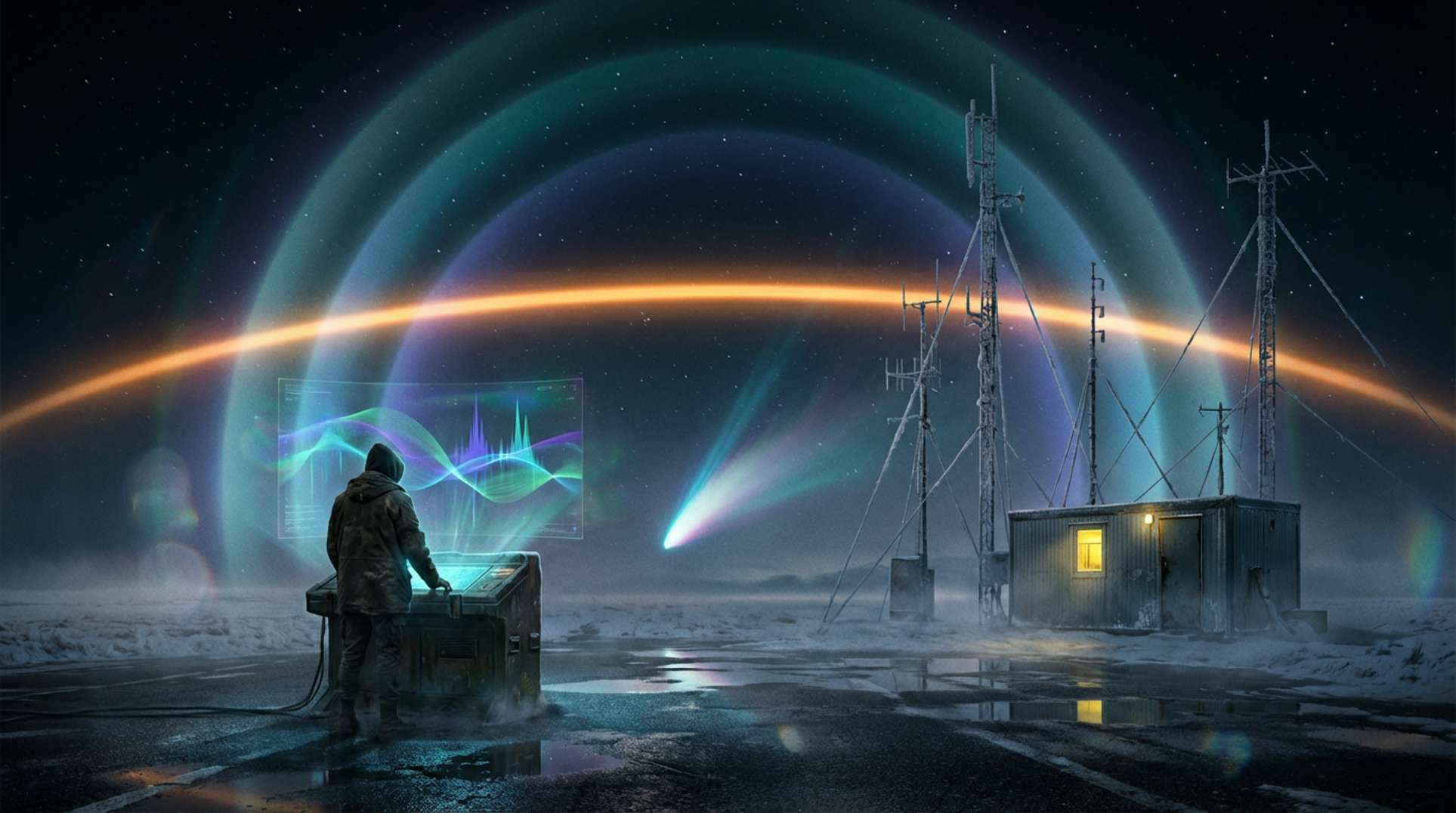For a fleeting few days, comet 3I/ATLAS captivated hardcore astronomers and UFO enthusiasts alike. The excitement peaked when astronomers confirmed that this interstellar comet—only the third of its kind ever discovered—made a significant course adjustment, a phenomenon unprecedented in comet observation. Fortunately, it posed no threat to Earth (Newsweek).
3I/ATLAS’s Course Shift: A True Astronomical Outlier
Nasa data and international tracking indicate that comet 3I/ATLAS reached its closest approach to the Sun in late October 2025. It then exhibited a course change that stunned veteran sky-watchers. The trajectory—extraordinarily hyperbolic and even stranger post-perihelion—prompted planetary defense officials to activate monitoring protocols, driven by scientific awe rather than fear. According to Sky & Telescope, the comet demonstrated erratic changes in velocity, brightness, and path, offering a rich source of data for those studying celestial mechanics and interstellar material.
A detailed analysis of 3I/ATLAS’s behavior highlights its safe passage—never closer than 170 million miles from Earth—ensuring that sky-watchers could marvel without concern. For those interested in meteor showers and cosmic near-misses, explore related defense alerts and this analysis on the comet’s role in upcoming galactic alignments.
The Science and Speculation: Alien Probes or Ice and Dust?
Astrophysicist Avi Loeb and his colleagues sparked controversy by suggesting that 3I/ATLAS might be a technological artifact. This theory fueled speculation that it adjusted its path intentionally, echoing a science fiction narrative. Such claims led to sensational headlines and social media debates, but the scientific community remained skeptical. As LADbible reports, Professor Brian Cox publicly dismissed alien theories, labeling manipulated clips and supportive “AI slop” as false, emphasizing the need for evidence-based analysis. He asserted that although exploring far-out ideas is valuable, the burden of proof is substantial, with existing data consistently supporting a natural—if bizarre—comet.
This clash between skepticism and sensationalism involves legacy comet experts and star-gazers eager for the next “Oumuamua moment.” Such debates resonate in archives covering Avi Loeb’s arguments for interstellar artifacts and recurring public anxieties discussed in other tech-skeptic events.
Trajectory History: Anomaly on an Interstellar Scale
3I/ATLAS stands out due to its unprecedented eccentricity—a near-straight line, diverging from the elliptical paths typical of solar system comets (scientific background on 3I/ATLAS). As it barreled through the solar system, its path shifted after perihelion, likely due to powerful outgassing or even surface jets. No comet in modern observation has shown such a large-orbit deviation unconnected to planetary encounters or massive fragmentations. Some speculative outlets labeled it as “physics-defying,” but mainstream commentators urge caution and patience.
This rare dynamic presents a goldmine for researchers tracking interstellar visitors. As it moves past the inner planets—never heading toward Earth—its evolution will inform planetary defense research, as detailed in ongoing monitoring protocols explained in this field report and historical reviews of outliers in scientific anomaly studies.
What It Means: Scientific Vigilance in an Era of Skywatcher FOMO
Is 3I/ATLAS a cosmic message or merely a wild natural visitor? The community’s verdict: remain fascinated, but trust the scientific method. The comet offers astronomers an unparalleled view into non-solar system chemistry while presenting a real-time case for debunking viral sensationalism. Ongoing dialogue, thoroughly documented across cross-disciplinary archives, reflects our desire for wonder alongside our necessity for scientific rigor.
As the comet recedes—well away from Earth—the episode vividly illustrates the conflict between viral fear, wild speculation, and solid data. For real-time tracking of extraordinary space events (and the occasional extraordinary claims), trust established sources like Unexplained.co.





